‘You Can’t Grow a Garden in an Apartment’: This Bengaluru Woman & Her 500 Plants Will Prove You Wrong
Have you been feeling like the seasons haven’t been adhering to their roster? You aren’t the only one.
Rainy days have been making way for a short ‘summer’ in between the downpours; cool winds coexist with humidity. And sometimes, a single day sees three seasons play out in tandem.
This seasonal cacophony has gardeners in a flummox.
Do we prepare our gardens for the rains?
Do we plant vegetables and fruits that can brave the heat?
Do we plant an all-season garden?
Well, looks like Aditi Rai Dastidar from Bengaluru has cracked the code. Her 25 x 6 feet balcony garden in her apartment is an aesthetic argument for how different plants can live together — philodendrons, sunflowers, hoyas, orchids, cauliflowers, tomatoes, zucchini, spinach and dahlias amongst others.
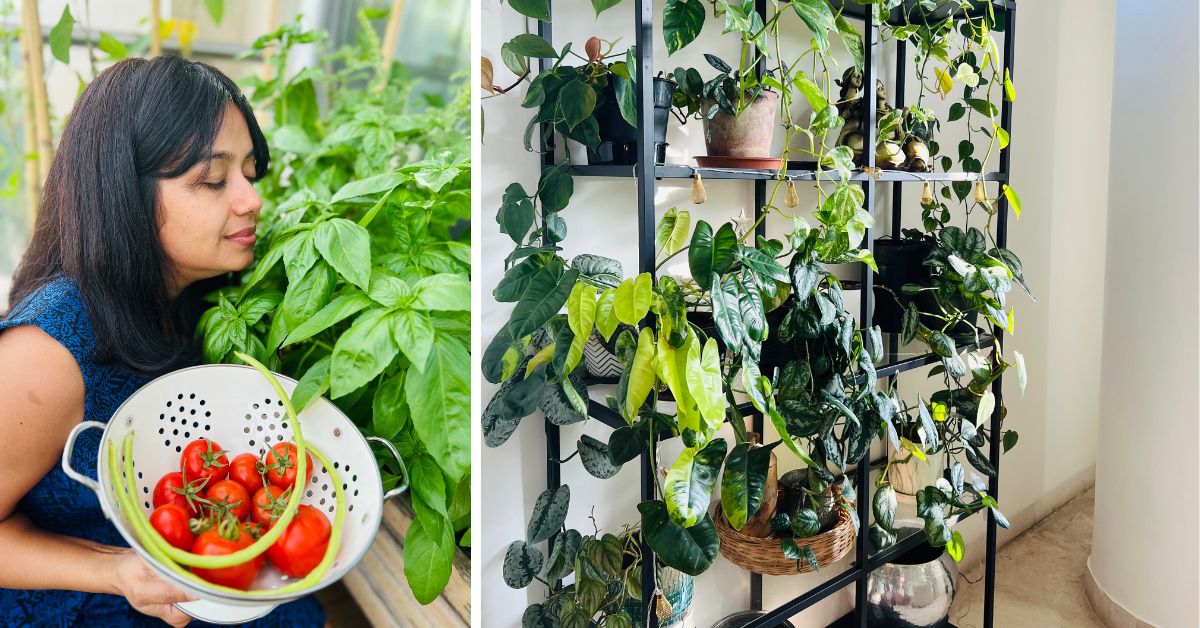 Aditi Rai Dastidar has a home garden with hundreds of fruits and vegetables
Aditi Rai Dastidar has a home garden with hundreds of fruits and vegetables
Gardening is in her DNA; Aditi grew up watching her grandfather and father tend the home garden. She watched and learnt.
“I have fond memories of picking flowers from the garden for my teachers and rushing to grab the fallen mangoes after a heavy rainstorm,” she says. As the years went by, gardening became a yardstick for happiness. “It taught me the value of what comes to the table,” Aditi shares. Today, in her home garden, she’s attempting to carry forward those same green traditions.
“There must be around 500 pots around the home,” she affirms.
How do you manage a garden in erratic seasons?
Nature takes care of itself, is what most gardeners would reason. Fair point. But with changing climates — sometimes in a single day — there must be something that one can do to protect their plants.
“Often, I wonder whether I should be following the same formula for all the plants, but it’s important to realise that you need to cater to their different needs,” Aditi mentions.
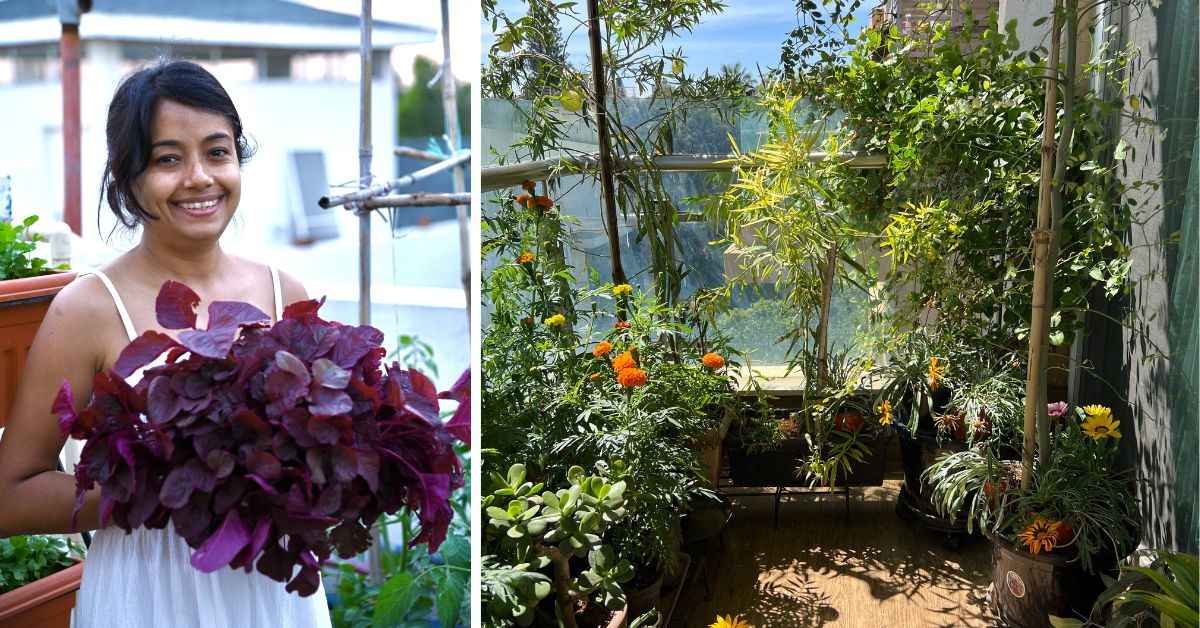 From lettuce to herbs and philodendrons, Aditi’s garden is a canvas of colour and caters to 20 percent of her kitchen needs
From lettuce to herbs and philodendrons, Aditi’s garden is a canvas of colour and caters to 20 percent of her kitchen needs
Differentiate between shade requirements
Aditi, in her gardening journey, has procured plants from many corners of the world. Take, for instance, the foliage anthuriums that have had quite an itinerant journey from the rainforests of the Amazon to her balcony garden.
“In the rainforest, the humidity levels are anywhere between 80 to 90 percent. Now, in a city like Bengaluru, which is so dry, the question is how to give them the artificial ambience needed to thrive. So, I’ve added a humidifier,” she explains. Aditi also follows a routine water spraying process on the plants to keep them cool.
Navigating soil mixes
This seasoned gardener has taken a newfound fancy to orchids and hoyas. But while these add a pop of colour to her garden, it also means extra work when it comes to soil mixes.
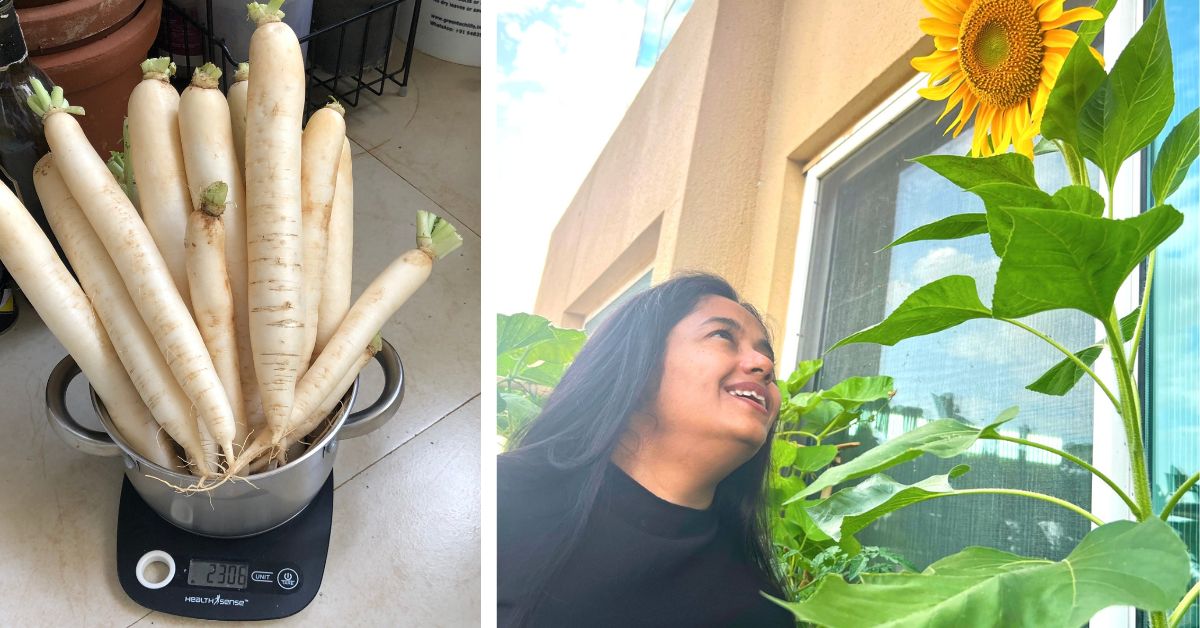 Preparing different soil mixes as per the flower or vegetable that’s being grown will help better fertilise the plant
Preparing different soil mixes as per the flower or vegetable that’s being grown will help better fertilise the plant
She explains, “The soil mix for hoyas is cocopeat, red soil, vermiculite, bonemeal, perlite, small pumice stones — the idea is to keep the roots moist but not tight; the soil mix for aroids is light and airy and prepared with perlite, charcoal, coco chips, pine wood, cocopeat, red soil, bone meal, clay balls and pumice stones.” Aditi procures the latter from Ooty. This is where she interjects, saying that while easy to say, preparing different soil mixes takes effort, since it comes down to sourcing the materials from different places.
“I’ve found that splitting my gardening time between different sets of plants that require the same soil mix helps. It helps me concentrate on just that set of plants,” she adds.
Every plant needs sunlight — the amount differs
“There is nothing like an indoor plant,” Aditi argues. “Every plant needs sunlight for photosynthesis. It’s just that there are some — which we call indoor plants — which cannot survive harsh heat. In nature, they live under a canopy of a tree and genetically thrive in ‘indirect’ light.”
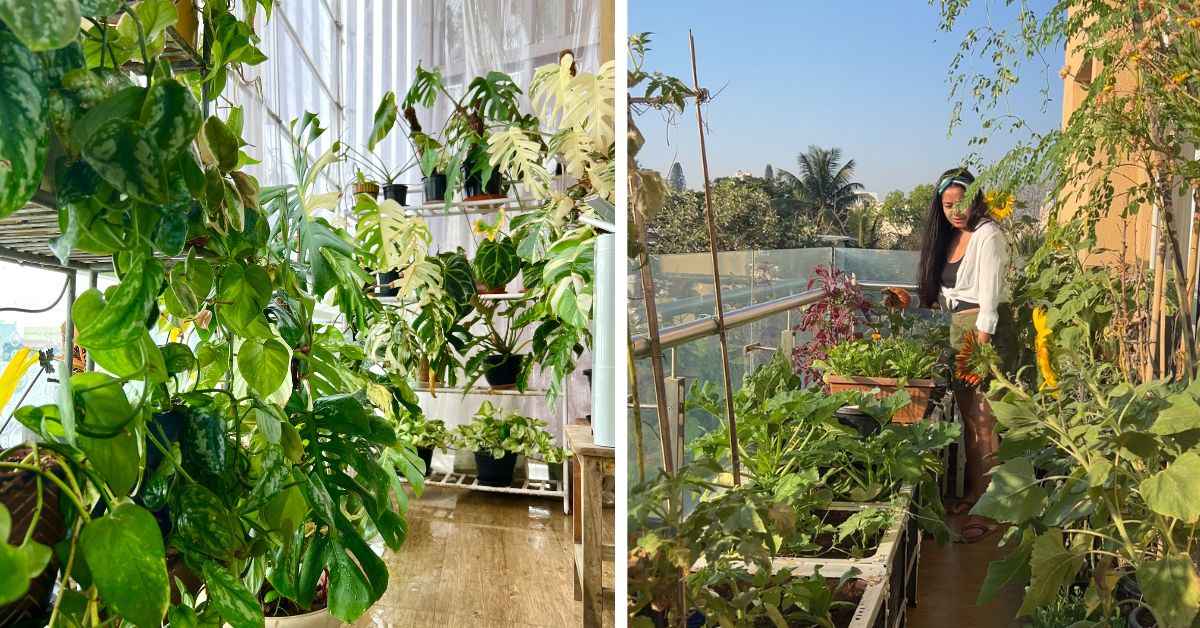 Aditi believes that maintaining a home garden in shifting seasons needs a careful understanding of rain direction, sunlight and wind speed
Aditi believes that maintaining a home garden in shifting seasons needs a careful understanding of rain direction, sunlight and wind speed
The secret is to place the vegetable plants which need a good amount of sunlight in a position where they will get it. The ‘indoor’ plants can be placed in areas where the light is less harsh.
Introduce palm trees in the building garden
The windspeed in high-rises can affect the plants. This is where Aditi learnt that having palm trees in the building garden helps act as wind barriers. Their feather-like fronds act like a filter, slowing down the gusts of wind and turbulence. Their height helps them disrupt stronger wind currents at higher levels, helping protect shorter, more delicate plants below.
Choose climate-resilient and native plants
This could be a steady approach to helping maintain an all-season garden. Opting for plants that are locally adapted and can tolerate a range of conditions — heat, fluctuating rainfall, and short dry spells — can be the antidote to your climate woes. Some plants you might want to consider planting are tulsi (Holy Basil), marigold, amaranth and drumstick.
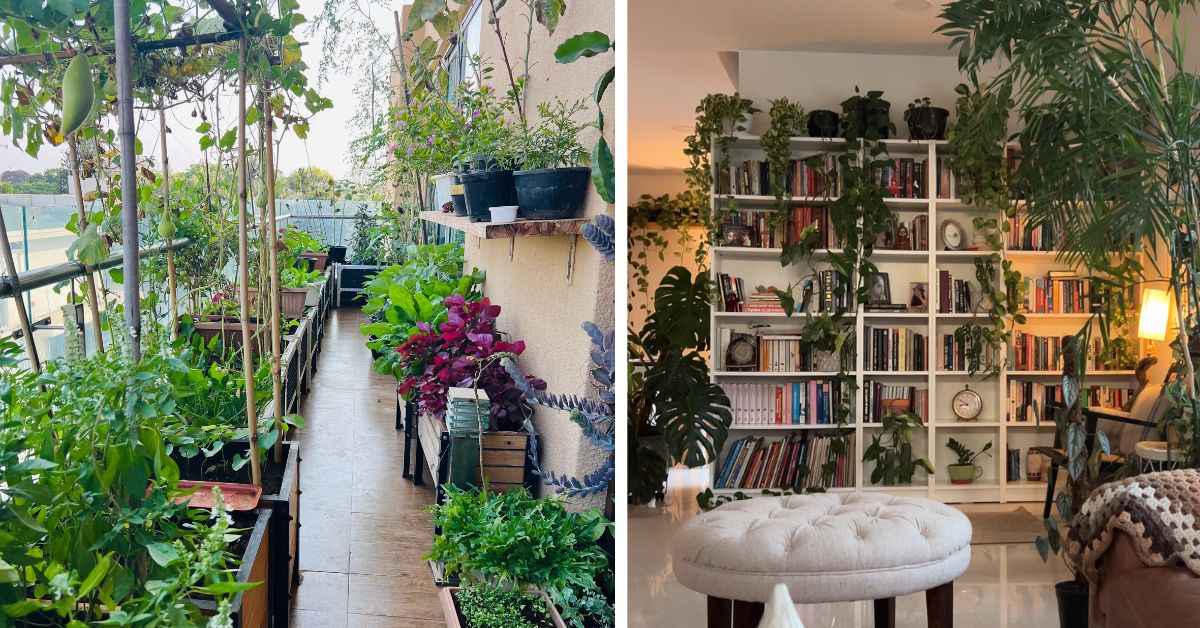 Choosing climate-resilient and native plants is key to maintaining a garden that can weather every season
Choosing climate-resilient and native plants is key to maintaining a garden that can weather every season
For instance, Aditi reasons that while the vegetable garden — which caters to 20 percent of her kitchen needs — takes a lot of caring for, there are the more ‘forgiving’ plants — money plants, philodendrons — which do not need much care.
Gardening is a careful balancing act between both kinds, she smiles.
Adopt smart and flexible watering techniques
Whether this is drip irrigation or clay pot irrigation, which helps deliver water directly to the plant’s roots without wastage, these are tactics that could help even when you are away. Another suggestion is to water the plants early in the morning or late in the evening to reduce evaporation loss.
But finally, no matter what you do, Aditi has a disclaimer for you:
You’re going to be on your toes
Every time Aditi hears the rain, she rushes to ensure her precious plants are safe. This is what tending to a garden in erratic weather entails, she laughs, adding that it can make you a little “crazy”.
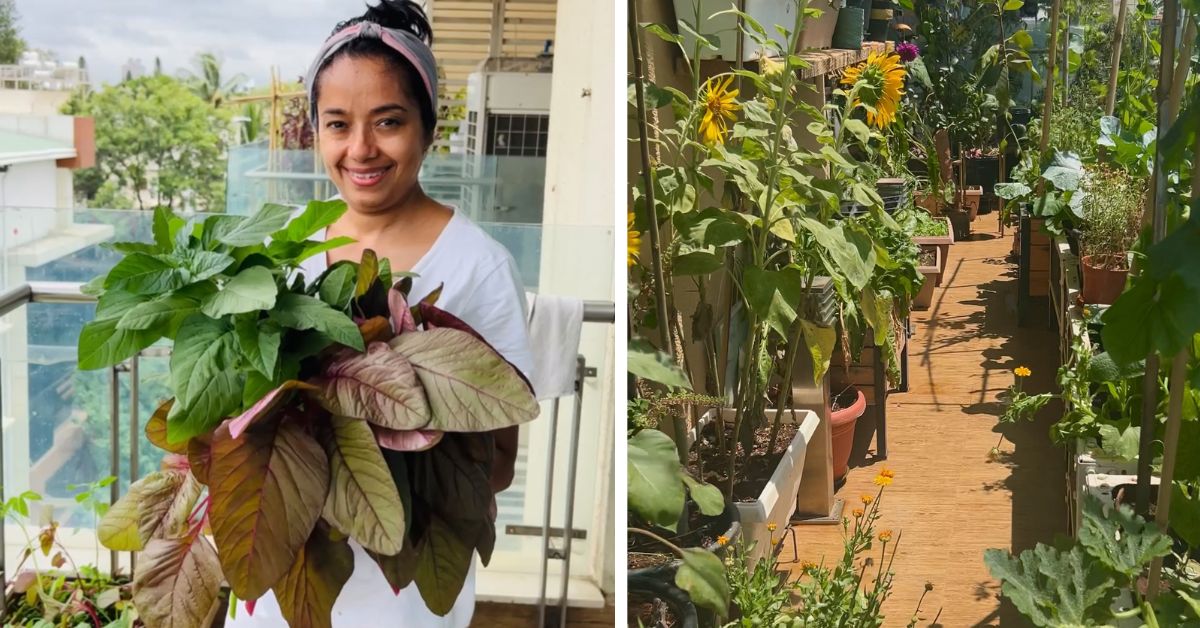 Adopting smart and flexible watering techniques for the plants will help them survive in erratic weather
Adopting smart and flexible watering techniques for the plants will help them survive in erratic weather
“I have watered my plants at 2 am sometimes; I’ve woken up in the middle of the night, remembering a plant that I haven’t seen in a while.” What has helped ease her worries, she adds, is figuring out the directions of the sunlight, the direction of the wind, and the rain.
“Whenever we’ve moved homes, I’ve always spent time doing this. You need to understand that even when it is raining, how much water is coming in and which plants are placed in the way,” she shares.
Maintaining a garden amid shifting seasons is a task. And all you can do is your best and let nature take care of the rest.
All images courtesy Aditi Rai Dastidar
News